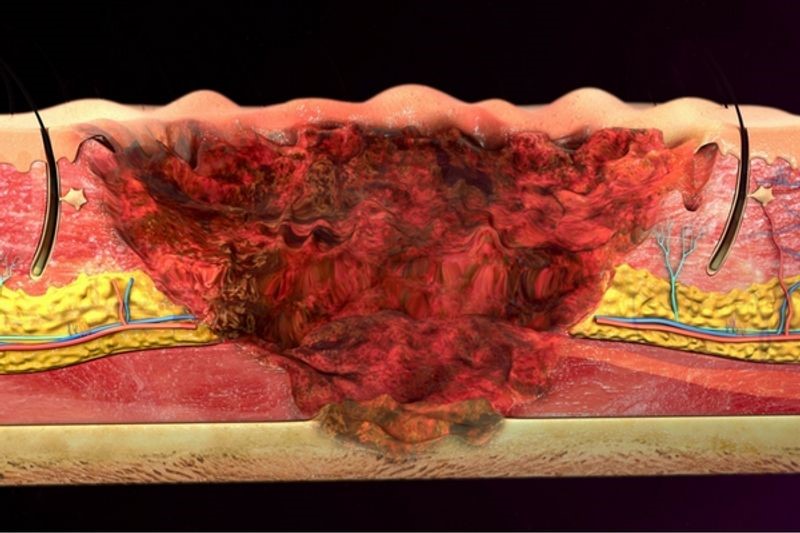
First Aid for Hydrofluoric Acid Exposure
Hydrofluoric acid is a very corrosive, highly irritating, and poisonous chemical that is accessible and used in many workplaces
Burns and exposure to this chemical can be severely painful and cause extensive damage or even death.
The Risks Associated with Hydrofluoric Acid
Hydrofluoric Acid (HF) Is a chemical compound that exists as a colourless glass or a fuming liquid.
Its unique properties make it significantly more hazardous than other commonly used acids.
HF has many uses – mineral digestion, surface cleaning, etching, biological staining, and more.
Even small amounts of this acid can be fatal and cause serious damage when exposed to the skin.
Anyone who has access to this compound should not underestimate the risks that come with it.
Depending on the concentration level, exposure to Hydrofluoric Acid can result in death
The main reason for this is the acid enters the bloodstream, which can trap calcium and magnesium.
In a snap, the acid can quickly damage vital organs, including the heart, muscles, and the nervous system.
Skin contact with a concentrated solution of this acid can also result in major burns and death.
The diluted solution can quickly penetrate the skin without an immediate burning sensation.
The delay in the body’s reaction to the acid is what makes it more dangerous.
Many workers are unaware they are exposed to or had contact with Hydrofluoric Acid due to a lack of symptoms
But once the acid the body, it will continually cause damage even after washing off the exposed skin.
Eye contact with the chemical can also cause immediate blindness and permanent eye damage.
For inhalation exposure, the workers will not be at risk unless the fuming HF contains greater than or equal to a 40% concentration level.
First Aid Treatment
HF is a hazardous chemical, and the full extent of injuries may not be obvious in the first couple of hours.
Immediate first aid treatment is essential, even for minor exposure.
Hydrofluoric Acid, Skin Contact
Following direct contact with the acid, the skin can produce deep and extremely painful burns, damaging the deeper layers of the skin.
For first aid treatment, immediately proceed to a source of water and flood the exposed area with large amounts of water.
Remove all contaminated clothing, including jewellery, while rinsing.
Use a calcium gluconate gel to massage the skin thoroughly while flushing with water.
For responders, never touch the victim without gloves and other protective gear.
Once done, call Emergency Number and inform the dispatcher that a person was exposed to hydrofluoric acid.
Continue the application of calcium gluconate gel while waiting for medical services to arrive.
THE RADIO OF THE WORLD’S RESCUERS? VISIT THE RADIO EMS BOOTH AT EMERGENCY EXPO
Eye Contact
Fumes from HF acid can cause eye dryness and a burning sensation inside the eye.
It can cause irreversible damage to the cornea, including possible dryness.
After exposure, immediately proceed to a wash station and flush the eyes with water for at least 10 minutes.
Hold it open during irrigation and if the victim is wearing contact lenses, have them removed as soon as possible.
Call emergency medical services and apply an ice compress to the eye area while waiting for help to arrive.
TRAINING IN FIRST AID? VISIT THE DMC DINAS MEDICAL CONSULTANTS BOOTH AT EMERGENCY EXPO
Inhalation of Hydrofluoric Acid
After an HF exposure, the effects on the lungs can occur or be delayed in between the first 36 hours.
Remove the person to the exposed air while ensuring the responder’s safety.
If the person is not breathing and has lost consciousness, begin artificial respiration right away.
Oxygen should be given as soon as possible by a trained first aider. Avoid mouth-to-mouth contact by using CPR barriers such as mouth guards or face shields.
Ingestion
Swallowing even the tiniest amount of hydrofluoric acid can cause various effects.
These include burning and bleeding of the digestive tract, vomiting, diarrhoea, and blood pressure collapse.
When this happens, do not induce vomiting. Instead, rinse the person’s mouth with clean water.
Give half to one cup of water, milk, or calcium/ magnesium-containing antacid for conscious victims.
Call emergency services right away.
Conclusion
First aid treatment for hydrofluoric acid burns and exposure will include basic life support, wound care, and appropriate decontamination.
Effective and quick first aid intervention can keep the person stable while waiting for advanced medical treatment.
Learn first aid today to keep the workplace safe from chemical injuries and other hazards in the working environment.
Read Also:
Emergency Live Even More…Live: Download The New Free App Of Your Newspaper For IOS And Android
What Should Be In A Paediatric First Aid Kit
Ukraine Under Attack, Ministry Of Health Advises Citizens About First Aid For Thermal Burn
Electric Shock First Aid And Treatment
RICE Treatment For Soft Tissue Injuries
How To Carry Out Primary Survey Using The DRABC In First Aid
Heimlich Maneuver: Find Out What It Is And How To Do It
The Patient Complains Of Blurred Vision: What Pathologies Can Be Associated With It?
A Tourniquet Is One Of The Most Important Pieces Of Medical Equipment In Your First Aid Kit
12 Essential Items To Have In Your DIY First Aid Kit
First Aid For Burns: Classification And Treatment
Compensated, Decompensated And Irreversible Shock: What They Are And What They Determine
Burns, First Aid: How To Intervene, What To Do


